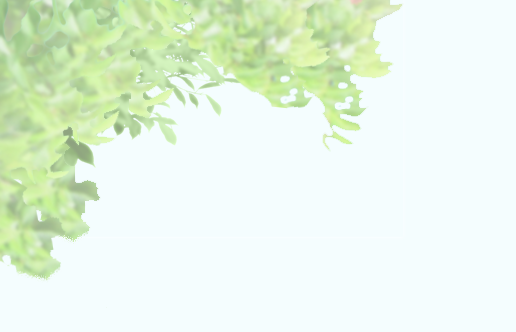

Mogicはかんがえる
『自分たちの好きなように会社を作っていけばいい。
他と違ってても、普通じゃなくても、信じられることをやっていく。
信じられること、それって案外と少ないものですから
そう、本当に愚直に、率直に、真摯にそれを探してきたんです』
2024.06.25
組織を情報として書きなおす
ふと、IT企業らしい思考実験をしようと思いつきました。
まず組織のあらゆるものを「情報の流れ」に変換できると仮定します。
要はメールや打ち合わせの内容、たわいもない日常会話、教えたり学んだりすること、新しく人を採用すること、見知らぬ誰かに知ってもらうこと、見積書や契約書を作ること、請求書を発行し入金を確認すること、資金繰りをすること、オフィスの設備や就業規則を整えること、勤怠時間をチェックすること、セキュリティを強化することとか、あらゆることを「情報の流れ」とみなします。
その上で、もしすべての情報を俯瞰できる立場ならどうルーティング(経路設計)するのが最適かという問題になります。
これは組織のトップだからすべての情報を閲覧できる権限があるという意味ではなく、本当にすべての情報に接しているという仮想の状態です。
普通の仕事現場なら1人の視点でやってくる情報を逐次処理するだけでいいのですが、このケースだと全員の情報を同時に把握しているのが難しいところです。
仮に10人の組織で1日分だとしても、すべての情報量を単純に加算すると膨大な量になるでしょう。
さらに時間の経過とともに今の情報が新しい情報を連鎖として生み出すため、放っておくと(直線か曲線かは別として)線形に累積されていきます。
何もしなければ、たくさんの未読メールが溜まってしまうイメージです。
はてさて、どうするのがいいのか。
1つ目に、取捨選択&優先順位の手法を考えます。
あらかじめ情報の粒度を決め、適切なサイズに分割します。
分割したものを組織全体への影響度というモノサシで優先順位をつけます。
1部門より複数部門に影響があるものを上位とみなします。
優先順位の上位から選び出し、下位の範囲は捨象する。
そうすれば、上位の優先順位だけに注意というリソースを充てればいいので情報量を減らすことができます。
ただし、リスクが残ります。
組織全体という一つの視点からは影響度が小さいと思えても組織外の社会からみれば影響度が大きいものを見逃す可能性があります。
これをトップダウンな「単一視点の罠」と呼ぶことにします。
2つ目に、ノード&フィルタリングの手法を考えます。
ハブ・アンド・スポークとなる重要なノード(結節点)を決めて、そこにフィルタリング(選別)の機能を設けます。
平たくいえば、メンバーから部門長に情報が集まり、部門長が総合的に判断してさらに上位のノードに情報をあげていくということです。
ノードが階層構造をとるなら、ステップを経るほど情報が減衰します。
これもリスクがあります。
重要なノード周辺だけで部分最適した判断をしやすく、階層があったりノード同士の距離が離れている場合に情報が遅延しやすい課題です。
部分最適されたノードごとの情報が時間差で届いて、結果として全体としての方針を決めるのに時間がかかり、悪い影響が拡大する可能性があります。
これをボトムアップな「多重ノードの罠」と呼ぶことにします。
3つ目に、冗長性&圧縮の手法を考えます。
送信するパケットを最少化するために情報理論で使われているものを応用します。
すべての情報のうち、類似する部分を同一とみなしてデータを圧縮します。
X={A,A',A'',A''',B,B'}という情報があるなら、{A*4,B*2}みたいにした方が短くなります。
ですから、すべての情報のうち似ているものを冗長とみなし同一とすれば圧縮できますから、全体の構造を維持しながら情報量を減らすことができます。
これにもリスクがあります。
あまりに多くの部分を類似とすれば圧縮率が高くなりすぎて、到達した先で情報を理解できなくなる恐れがあります。
かといって、解像度を上げて分解能を高めすぎると圧縮するところがない。
つまり、何をもって類似とするかしないかの基準が難しいということです。
これを解像度による「冗長性レベルの罠」と呼ぶことにします。
紙面の都合上、これ以上展開できないので強引にまとめに入りますと
10年前、20年前と比較して組織内の情報は圧倒的に増えているわけですから、新たな問題が起きたらいろんな罠に怯えることなく、幾何学や分類学としての組織図より情報学としての組織網に取り組むべきなんじゃないかという提案です。
最新記事
代表インタビュー
月別アーカイブ
- 2025年11月
- 2025年10月
- 2025年09月
- 2025年08月
- 2025年07月
- 2025年06月
- 2025年05月
- 2025年04月
- 2025年03月
- 2025年02月
- 2025年01月
- 2024年12月
- 2024年11月
- 2024年10月
- 2024年09月
- 2024年08月
- 2024年07月
- 2024年06月
- 2024年05月
- 2024年04月
- 2024年03月
- 2024年02月
- 2024年01月
- 2023年12月
- 2023年11月
- 2023年10月
- 2023年09月
- 2023年08月
- 2023年07月
- 2023年06月
- 2023年05月
- 2023年04月
- 2023年03月
- 2023年02月
- 2023年01月
- 2022年12月
- 2022年11月
- 2022年10月
- 2022年09月
- 2022年08月
- 2022年07月
- 2022年06月
- 2022年05月
- 2022年04月
- 2022年03月
- 2022年02月
- 2022年01月
- 2021年12月
- 2021年11月
- 2021年10月
- 2021年09月
- 2021年08月
- 2021年07月
- 2021年06月
- 2021年05月
- 2021年04月
- 2021年03月
- 2021年02月
- 2021年01月
- 2020年12月
- 2020年11月
- 2020年10月
- 2020年09月
- 2020年08月
- 2020年07月
- 2020年06月
- 2020年05月
- 2020年04月
- 2020年03月
- 2020年02月
- 2020年01月
- 2019年12月
- 2019年11月
- 2019年10月
- 2019年09月
- 2019年08月
- 2019年07月
- 2019年06月
- 2019年05月
- 2019年04月
- 2019年03月
- 2019年02月
- 2019年01月
- 2018年12月
- 2018年11月
- 2018年10月
- 2018年09月
- 2018年08月
- 2018年07月
- 2018年06月
- 2018年05月
- 2018年04月
- 2018年03月
- 2018年02月
- 2018年01月
- 2017年12月
- 2017年10月
- 2017年09月
- 2017年08月
- 2017年07月
- 2017年06月
- 2017年03月
- 2017年01月
- 2016年11月
- 2016年06月
- 2016年03月
- 2015年12月
- 2015年04月
- 2014年07月
- 2014年05月
- 2013年06月
- 2013年03月
- 2012年12月
- 2012年05月
- 2012年04月
- 2012年03月
